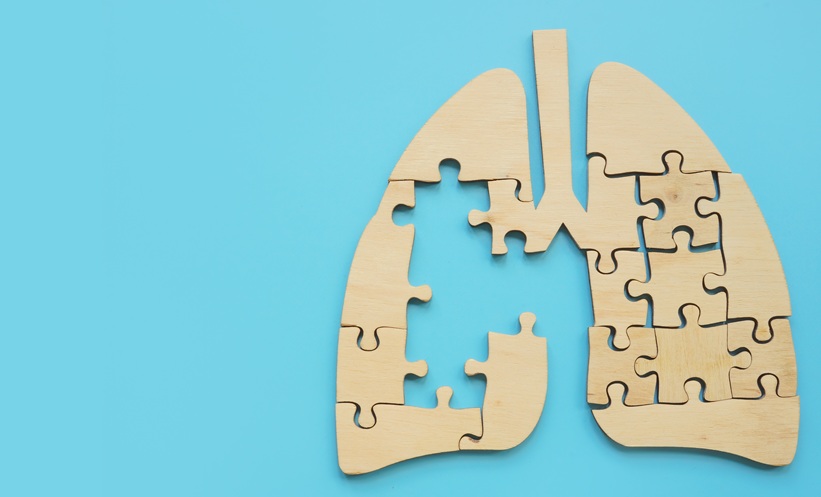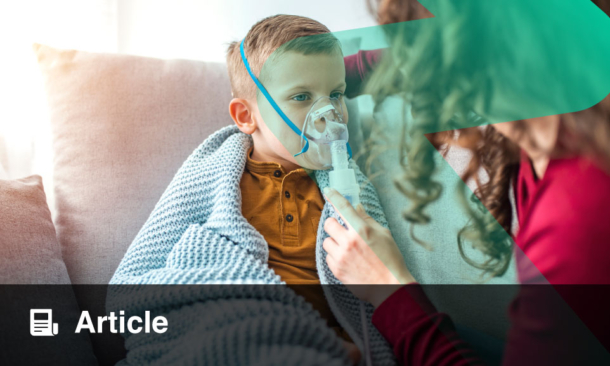WITH an impressive 34,000 members, attendees from more than 160 countries worldwide, and a record number of early career members, the European Respiratory Society (ERS) Congress 2024 was one to be remembered. Taking place in the vibrant and historical Vienna, Austria, from 7th–11th September, the Congress featured dozens of symposia, lectures, abstract presentations, and scientific posters from experts in the field, discussing all of the hottest topics in respiratory medicine, as well as the latest breaking research into chronic obstructive pulmonary disease (COPD), bronchiectasis, and much more.
The bustling event kicked off with a welcome from the ERS President, Monika Gappa, Children’s Hospital, EVK Düsseldorf, Germany, who expressed her gratitude at the vast number of healthcare professionals and key opinion leaders who came together from around the globe, both in person and online, to make this year’s ERS Congress the best one yet. “We care for patients from birth to old age, from prevention to palliative care, based on respiratory physiology to basic research into new molecules,” she highlighted to an engrossed crowd, emphasising just how vital organisations such as ERS and everyone who works with them are.
Gappa went on to discuss the theme that has continued in the society throughout her career, lifelong lung health. With a wealth of research having come out in recent years about the effects of early life events on lung health in adult life and the new initiative from the ERS, ‘Healthy Lungs for Life’, this has become and continues to be a priority for the organisation and the clinicians involved in it. With this comes the responsibility of leading by example, she went on to explain, urging her colleagues to not only advocate for healthier lifestyles amongst their patients but to embrace it themselves, avoiding tobacco, living more sustainably to reduce pollution, and encouraging vaccination against respiratory diseases. Gappa closed her rousing welcome speech by encouraging healthy lifestyles amongst patients and clinicians alike, collaboration between departments, and education for younger individuals in the field, something which ERS is continually improving.
Following the President was none other than medical futurist, Bertalan Mesko, Semmelweis Medical School, Budapest, Hungary, who took to the stage to discuss the transformative impact of science fiction on the medical field. What if technology could save millions of lives? What if a new technological advancement could transform medicine for the worse?
Technology and the role of AI in healthcare have been a topic on the minds of physicians and researchers in every field, and Mesko’s speech aimed to open their eyes to the possibilities these developments hold. He highlighted that in previous centuries, we could spend decades developing one invention, perfecting one piece of equipment; now, thousands of innovative ideas and technologies are coming out every day. These developments have the potential to let healthcare professionals access patient data, insights, information, and diagnostic help faster and easier than ever before; they have been shown to have the ability to predict exacerbations in COPD and analyse spots of lung cancer and signs of primary biliary cholangitis or pneumonia. Mesko’s message was not that AI and technology will one day dominate healthcare, but that they have the ability to make systems more efficient, improve patient relationships, and improve education. He urges everyone to embrace the changes facing respiratory medicine today, balancing human relationships and technology with the goal of improving patient care worldwide. Medical professionals should be leading the way in developing technologies to improve disease prevention and patient outcomes, he pointed out and encouraged his fellow healthcare professionals to look forward to the future of digital health.
The opening ceremony proceeded with these messages in mind, presenting awards to researchers and clinicians who have made a significant impact in the field, as well as welcoming new members of ERS. New webinar series, new educational resources, and exciting new hybrid programmes were announced, highlighting ERS’ commitment to improving education and working with early-career healthcare professionals. The themes of sustainability, technology, and the dangers of smoking were addressed throughout the session, as well as for the entirety of the Congress, with many lectures and posters emphasising the importance of these issues in respiratory disease.
This year’s Congress was a truly international and collaborative event, in which it was made abundantly clear how important societies such as ERS are when it comes to beating respiratory diseases and educating the population on how to live a healthier lifestyle.
Read on for more key insights into ERS 2024, and make sure to join us next year for ERS 2025, which will take place in the picturesque Amsterdam, the Netherlands.
AI Shows Promise in Detecting Lung Disease in Premature Babies
AI has shown promising results in detecting lung disease in premature babies, according to a study presented at the ERS Congress by Edgar Delgado-Eckert from the University of Basel, Switzerland.
The study demonstrated that artificial neural networks (ANN) can effectively identify bronchopulmonary dysplasia (BPD), a serious lung condition affecting premature infants. BPD is challenging to diagnose in newborns, as traditional lung function tests are unsuitable for infants. Currently, BPD is often identified based on prematurity and the need for respiratory support rather than direct lung assessments. Delgado-Eckert’s team developed a novel approach using a soft face mask with a sensor to capture airflow and volume while the newborn is asleep, providing sequential tidal breathing data that the ANN can analyse.
The study involved 329 infants, including both full-term and premature babies, assessed for BPD. The team measured 100 consecutive breaths per baby to train, validate, and test a Long Short-Term Memory (LSTM) model, a type of ANN suited for sequential data. The LSTM model achieved a 96% accuracy rate in identifying BPD from unseen test data, marking a significant advancement in non-invasive diagnostics for infants.
Delagado-Eckert emphasised that this method allows for early BPD detection as soon as 1 month of age, enabling quicker access to treatment and potentially improving long-term outcomes for affected infants. The non-invasive nature of the test also reduced distress for both babies and their parents.
The study team aims to expand their work by testing the ANN’s applicability shortly after birth, assessing lung function in older children, and exploring its potential in diagnosing other conditions, such as asthma.
Epileptic Drug Reduces Symptoms of Sleep Apnoea
SULTHIAME, a drug currently in use for epilepsy, has been shown to reduce symptoms of obstructive sleep apnoea (OSA), according to results of a clinical trial presented at the ERS Congress.
A primary symptom of OSA is tiredness, but it is also associated with an increased risk of high blood pressure, stroke, heart disease, and Type 2 diabetes. The standard treatment for obstructive sleep apnoea is sleeping with a machine that blows air to keep the airways open, called continuous positive airway pressure machines or mouthpieces. Unfortunately, many people find these machines hard to use over the long term, so there is a need to find alternative treatments.
Researchers conducted a double-blind, randomised, placebo-controlled trial involving 298 people with OSA from 28 different centres in Spain, France, Belgium, Germany, and the Czech Republic. The participants previously reported intolerance to continuous positive airway pressure machines, highlighting the need for alternative treatments. Sulthiame works by targeting the respiratory system, inhibiting an enzyme called carbonic anhydrase, and stimulating the muscles in the upper airway; therefore, the research team investigated the potential benefit of sulthiame in these patients.
At the start of the trial, and again at 4 and 12 weeks, patients underwent polysomnography assessments, a diagnostic test that monitors breathing, blood oxygen levels, heart rhythm, eye movements, and brain and muscle activity during sleep. Participants were divided into four groups: 74 received 100 mg of sulthiame daily, 74 received 200 mg, 75 received 300 mg, and 75 were given a placebo.
The frequency of respiratory pauses during sleep, measured by AHI3a, decreased by 17.8% in patients taking the lowest dose, 34.8% in those on the medium dose, and 39.9% in those receiving the highest dose. Using another measure, AHI4, the treatment led to nearly a 50% reduction in respiratory pauses, particularly when oxygen levels dropped significantly. Patients with OSA who experienced daytime sleepiness also reported feeling less sleepy while taking sulthiame. Side effects, such as pins and needles, headaches, fatigue, and nausea, were generally mild to moderate.
In conclusion, the results showed that patients treated with sulthiame experienced fewer breathing pauses and higher blood oxygen levels during sleep. These findings suggest that sulthiame could be an effective treatment for OSA, especially for patients who cannot tolerate CPAP machines.
Medical Clowns Shorten Hospital Admissions for Children with Pneumonia
A RECENT study, presented at ERS 2024, has revealed that medical clowns (MC) can significantly reduce the length of hospitalisation for children with community-acquired pneumonia (CAP), one of the leading causes of paediatric hospitalisation.
The study, conducted as a prospective randomised controlled trial, included 52 children aged 2–18 years, hospitalised for CAP. The children were split into two groups, one receiving standard care, and the other receiving standard care plus twice daily 15-minute visits from medical clowns during the first 48 hours of hospitalisation. The results showed that children in the medical clown group had a significantly shorter hospital stay, 43.5 hours on average, compared to 70 hours in the control group. Moreover, children treated with the assistance of MCs also needed fewer days of intravenous antibiotic therapy (2.3 versus 5 days) highlighting the clinical benefits of this intervention.
The study supports the view that MCs, trained professionals who use humour, music, and imagination to alleviate stress and anxiety, help children adapt better to the hospital environment. These interactions not only improved psychological well-being but also aided children in adhering to treatments such as oral antibiotics and fluids, contributing to faster recovery.
Furthermore, the research indicates that humour and laughter may have direct physiological benefits, including lowering heart and respiratory rates and enhancing immune function. Karin Yaacoby-Bianu, Carmel Medical Centre, Haifa, Israel, one of the study’s authors, suggested that incorporating MCs into paediatric care could significantly ease the emotional and physical stress on children and their families. The potential cost reduction for healthcare systems is another benefit, as shorter hospital stays reduce overall treatment expenses.
These findings underscore the importance of exploring non-pharmacological interventions, like humour therapy, in paediatric care, opening doors for further studies on the broader impact of medical clowns on other illnesses.
Asthma Linked to Miscarriage and Fertility Treatment in Women
A RECENT study presented at the ERS Congress in Vienna, Austria, has revealed that women with asthma are more likely to experience miscarriages and require fertility treatment. However, asthma does not seem to affect the overall number of live births.
The research, led by Anne Vejen Hansen, Copenhagen University Hospital, Denmark, analysed the reproductive outcomes of 769,880 Danish women born between 1976–1999. The study followed these women from 1994–2017 and classified those regularly using asthma medication as asthmatic.
Findings showed that women with asthma had a higher rate of fetal loss (17.0% compared to 15.7% in non-asthmatic women) and were more likely to use fertility treatments (5.6% versus 5.0%). However, the proportion of live births was the same for both asthmatic and non-asthmatic women, standing at 77%.
Hansen explained: “The more severe the asthma and the more flare-ups, the greater the likelihood of needing fertility treatment. While the cause is unclear, it could be linked to systemic inflammation affecting reproductive organs.”
Lena Uller, Head of the Respiratory Immunopharmacology research group at Lund University, Sweden, who was not involved in the study, commented: “It’s reassuring that asthma doesn’t affect live birth rates, but women should be aware of potential fertility challenges. Effective asthma management is essential for reproductive health.”
“The fact that the more severe the asthma, the more the problems with fertility, suggests that uncontrolled asthma is the problem and we should be helping women to get their asthma under control,” she added.
This research highlights the importance of addressing asthma control in women of reproductive age. Further investigations into the impact of asthma on fertility in both women and men are planned.
Saline Nasal Drops Shorten Cold Duration in Young Children
A NEW STUDY presented at the ERS Congress 2024 found that using hypertonic saline nasal drops can reduce the length of the common cold in children by 2 days.
The study led and presented by Steve Cunningham from the University of Edinburgh, UK, showed results from the ELVIS-Kids randomised controlled trial. A total of 407 children under 6 years of age were included and divided into two groups based on the development of cold symptoms. Group 1 received hypertonic saline ~2.6% (salt-water) nasal drops, and Group 2 received the usual care. Among the 301 children who developed a cold, those treated with saline drops experienced symptoms for an average of 6 days, compared to 8 days for the usual care group. Additionally, children receiving saline drops required fewer medications during their illness.
The saline drops, made of sodium and chloride, work by enhancing the body’s natural defences against viral infections. Cunningham explained that the chloride component helps cells in the nose and airways produce hypochlorous acid, which is used by the body to combat viruses. This mechanism is believed to suppress viral replication, thus shortening the duration of the infection.
The results also showed that fewer households reported family members catching a cold when children used saline drops (46% compared to 61% with usual care). A significant majority of parents (82%) reported that the drops helped their children recover faster, and 81% said they would use the drops again in the future.
The research team led by Cunningham now plans to explore the potential benefits of saline drops on wheezing during colds, as initial results indicated that children who used the drops experienced significantly fewer episodes of wheezing (5% versus 19%).
In conclusion, the findings indicate that using saline drops could be a practical solution for reducing the duration and burden of colds in young children and their families, and potentially easing the health and economic impact of colds worldwide.
Impact of Early Smoking and Packyears on Young Adult Respiratory Health
THE EFFECTS of age at smoking initiation and the number of packyears on the development of respiratory symptoms, such as asthma, have been investigated by researchers from the Obstructive Lung Disease in Northern Sweden (OLIN) project and presented at the ERS Congress 2024.
The study followed a cohort of 3,430 8-year-old participants from 1996 until they turned 19 years old. Data were collected annually from participants through questionnaire surveys on asthma, respiratory symptoms, and once they had reached 13 years old, smoking habits. At 28 years old, a follow-up questionnaire was completed by 2,291 of these individuals, 71% of the original cohort, to assess long-term respiratory health and symptoms.
The study found that 22% of participants had reported smoking at least once daily, with more women (25%) than men (19%) being identified as daily smokers. Of these smokers, 29% had started at or before the age of 15 years, accumulating an average of 2.3 packyears. Another 35% started between the ages of 16 and 17, with 1.8 packyears on average, and 35% began smoking after turning 18, with 1.2 packyears on average.
By age 28, 23% of the participants reported asthma, and 53% experienced at least one respiratory symptom, such as wheezing (36%), or sputum production (30%). The study concluded that both early smoking initiation, before 18 years old, and the total number of packyears were strongly associated with these symptoms. Starting to smoke at the age of 15 years or younger was linked to a significantly higher risk of respiratory issues.
While asthma was also associated with early smoking and packyears, this link weakened after adjusting for factors such as family history of asthma and childhood exposure to smoke. The findings emphasise the need for early intervention to prevent smoking initiation in children and teenagers, given the potential rapid onset of respiratory issues in young adulthood.
Smartphone Voice Recordings Aid Early Detection of Lung Flare-Ups
A PILOT STUDY presented at the 2024 ERS Congress highlighted how changes in voice recordings on a smartphone can signal the onset of chronic obstructive pulmonary disease (COPD) exacerbations.
COPD, encompassing emphysema and chronic bronchitis, is the third leading cause of death globally, according to the WHO. A flare-up in symptoms like breathing difficulties and coughing (exacerbation) significantly increases the risk of hospitalisation, cardiovascular events, and even death. Early detection is crucial, yet challenging, as these symptoms typically start at home.
This study, led by Loes van Bemmel from Maastricht University Medical Centre, the Netherlands, explored whether voice analysis could predict exacerbations early. She explained that patients had reported changes in their voice before and during flare-ups, and the study aimed to assess whether these changes could be objectively recorded and analysed to detect early signs.
Twenty-eight patients with COPD participated in the 12-week study, recording their voices daily via a smartphone app. They were asked to say “aah” for as long as possible in one breath, and either read a short story or answer a question after. They also completed daily symptom questionnaires. During the study, there were 16 occasions where exacerbations were recorded.
Voice recordings were analysed, revealing that the patients’ voices became high-pitched when an exacerbation was imminent, and identified more jitter in patients when exacerbation was beginning. These changes support the hypothesis that voice alterations could indicate the onset of an exacerbation. Van Bemmel stressed that these preliminary findings need validation in a larger cohort. If successful, this could enable patients to detect and manage exacerbations at home, improving outcomes and reducing hospitalisations.
Van Bemmel and colleagues in the future plan on developing the SPEAK app, in collaboration with Radboud University Medical Centre, the Netherlands, to detect exacerbations through voice analysis and offer home-based support. Researchers are also focusing on ensuring the secure collection and storage of speech data to protect patients’ privacy.
Frits Franssen, the Secretary of the ERS assembly on respiratory clinical care, commented on the potential of voice analysis for early detection of COPD exacerbations, suggesting that if further validated, this approach could offer an efficient, accessible method of alerting patients and doctors to the need for early intervention, potentially saving lives.







